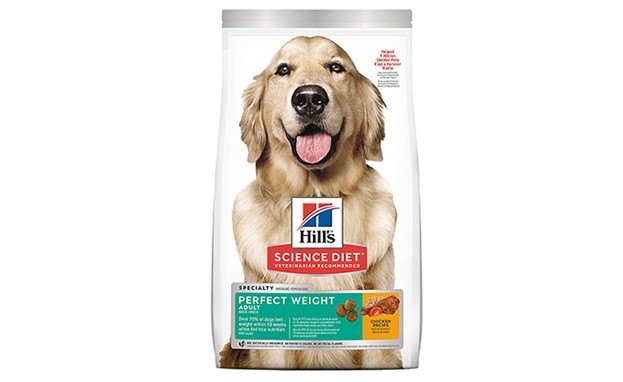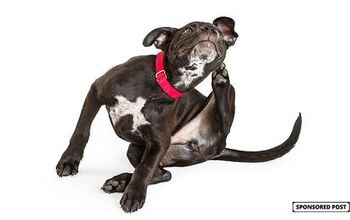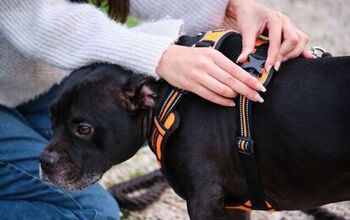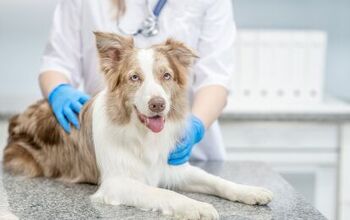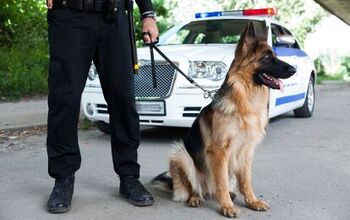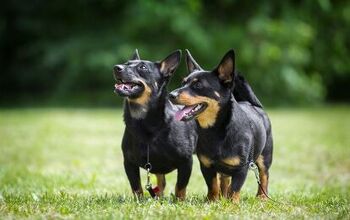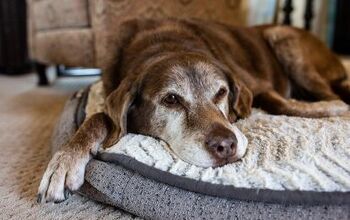How The Right Diet Can Help Your Dog Lose Weight

The pet obesity epidemic is rightfully named so – according to Association for Pet Obesity Prevention, an estimated 60% of cats and 56% of dogs in the United States are overweight or obese, and the numbers are only growing each year.
These are alarming rates, considering that obesity is directly linked with a number of serious health issues, including cardiac disease, diabetes, and cancer, and has been associated with a shorter lifespan in dogs through scientific studies. According to Dogster, around 22% of dogs in the US are considered obese while 32% of owners with overweight or obese pets consider their pets normal. Needless to say, making sure your pet is at a healthy weight should be one of your primary concerns as a responsible pet parent, as it can help majorly improve your pet’s quality (and longevity) of life, as well as help prevent many serious illnesses. Obesity can reduce a dog's lifespan by up to 2.5 years! But the big question is how do you help your dog lose weight? One way is to try a pet food specifically formulated to do just that. Right now, you can get Hill’s Science Diet featured products for up to 15% off.
If you're unsure if your dog needs to lose weight, you can follow these few steps provided by the American Kennel Club:
- Observe Your Dog’s Body Shape: Look at your dog from above to see if the body appears round and oval-shaped, which indicates obesity. A healthy weight dog will have a noticeable waist and straight sides.
- Feel for Ribs: Check the prominence of your dog’s ribs. If you can feel the ribs easily without pressing hard, your dog is likely at a healthy weight. Difficulty in feeling the ribs because of excessive fat suggests overweight.
- Side View Analysis: View your dog from the side. A raised waist and a tucked-up abdomen are signs of a healthy weight. An oval-shaped or sagging waist indicates overweight.
- Check for Fat Pads: Feel for any excess fat, particularly around the hips and between the legs. Overweight dogs often have noticeable fat pads.
- Monitor Behavior: Observe your dog’s activity level and mobility. An inactive lifestyle, difficulty moving, breathing problems, and excessive tiredness during activity can all be signs of being overweight.
- Weigh Your Dog Regularly: Regular weigh-ins at the vet are important. The vet can compare your dog’s weight to a body condition score chart to determine if your dog is at an appropriate weight for its breed and size.
What You Can Do to Help Your Pet Lose Weight in a Healthy Way
Image by simona pilolla 2/Shutterstock.com
Unlike us, dogs can’t just hit the gym after binging on junk food. While beneficial and necessary for their overall health, exercise can't entirely compensate for a healthy diet. Dogs need to have a good balance of daily movement and a healthy diet; that combination is the best way to help them get to and maintain a healthy weight while keeping things natural. Take your pet on daily walks, play fetch or Frisbee, let them run around your backyard, or explore nature on hikes together. It will help them stay fit and healthy, for sure – not to mention be quite fun for them – but on its own, it may not help shed off all of those extra pounds. Combining exercise with a healthy diet is the best way to get the results you want.
“Weight loss begins and ends at the food bowl for dogs and cats,” Ernie Ward, DVM, and founder of the Association for Pet Obesity Prevention (APOP), tells American Kennel Club. “Weight loss for humans and dogs is 60-70% diet and 30-40% exercise.”
Get 15%-off Select bags of Hill's Science Diet Specialty Foods at PetSmart.com! Valid 5/1 - 5/31
Image by evrymmnt/Shutterstock.com
Unlike us, dogs can’t just hit the gym after binging on junk food. While beneficial and necessary for their overall health, exercise can't entirely compensate for a healthy diet. Dogs need to have a good balance of daily movement and a healthy diet; that combination is the best way to help them get to and maintain a healthy weight. Take your pet on daily walks, play fetch or Frisbee, let them run around your backyard, or explore nature on hikes together. It will help them stay fit and healthy, for sure – not to mention be quite fun for them – but on its own, it may not help shed off all of those extra pounds. Combining exercise with a healthy diet is the best way to get the results you want.
Get 15%-off Select bags of Hill's Science Diet Specialty Foods at PetSmart.com! Valid 5/1 - 5/31
One of Our Favorite Weight Control Foods for Dogs
One great example of a high-quality weight control food for dogs is Hill's® Science Diet® Perfect Weight Adult Dog Food. Made with natural ingredients and packed with protein, it puts an emphasis on lean muscle maintenance, while also providing optimal ingredients for weight management. High in protein and high in fiber, this dog food includes L-carnitine and coconut oil to support your pet’s metabolism and encourage healthy weight loss. In fact, the effects and the efficiency of this formula have been clinically proven to work wonders for obese and overweight dogs: over the course of 10 weeks, over 70% of dogs who were fed Hill's® Science Diet® Perfect Weight Adult Dog Food lost weight. That’s quite impressive considering that this is not an unhealthy diet for quick fat loss, but a nourishing, sustainable diet that can be fed exclusively to maintain ideal weight throughout your dog’s life.
Calculating Caloric Needs for Weight Loss in Dogs
When embarking on a weight loss plan for your dog, the initial step involves your veterinary care team determining the necessary caloric intake for weight reduction. This calculation is tailored to the unique needs of your dog, utilizing various formulas that consider average needs, but adjustments will likely be necessary as the plan progresses.
It's crucial to maintain regular communication with your veterinary team to adjust the calorie count as needed, ensuring it aligns with your dog's changing weight management requirements.
Caloric Calculation and Monitoring by Your Veterinary Team
Your vet might request a detailed food diary to better understand your dog's current caloric intake. This diary should include everything your dog consumes over several days. From there, your vet can set a starting point for caloric reduction based on the specific energy density of the prescribed weight-loss dog food. This precise approach highlights why it's important to stick with one type of weight-loss food unless advised otherwise by your vet.
For more accuracy in portion control, your vet will likely recommend measuring your dog's food in grams using a kitchen scale rather than cups or cans, which can lead to overfeeding or underfeeding. Adjusting food portions is significantly more precise with a scale, facilitating easier and more effective modifications to the diet plan.
Introducing New Weight-Loss Food
Introducing new food should be a gradual process, especially for dogs with sensitive stomachs or picky eating habits. Start by mixing a small portion of the new food with their current food, gradually increasing the new food's proportion over approximately three weeks. This slow transition helps mitigate gastrointestinal upset and allows your dog to adjust to the new taste and texture.
Once your dog has started to accept the new diet, follow the recommended transition schedule:
- Step 1: Mix 25% of the new food with 75% of the old food.
- Step 2: Mix 50% of the new food with 50% of the old food.
- Step 3: Mix 75% of the new food with 25% of the old food.
- Step 4: Give 100% of the new food.
If your dog is hesitant about the new food, consult your vet for strategies to make the food more appealing, such as warming the food or adding a palatable supplement.
Managing Treats During Weight Loss
While treats don't have to be eliminated, their management becomes crucial in a weight-loss regimen. Treats should constitute no more than 10% of the total caloric intake. For example, if your dog's diet consists of 600 calories per day, only 60 calories should come from treats. This requires careful selection and portion control of treats, and possibly consulting with your veterinary team to integrate treat consumption into the overall dietary plan without exceeding caloric limits.
Image by Poltavets Anastasiia/Shutterstock.com
Combined with physical activity your pet is comfortable with, be it a short walk around the block to start with, or hour-long play sessions in the dog park, an optimized weight management food formula such as this one by Hill’s can help you put your dog back on track with their health and quality of life. Losing weight may help improve their joint health and mobility, reduce the risk of cardiac disease, diabetes, and cancer, and increase their chances of living long, happy lives by your side.
To find out how much exercise your dog may need, try this dog exercise calculator to figure out a good starting point.
Get 15%-off Select bags of Hill's Science Diet Specialty Foods at PetSmart.com! Valid 5/1 - 5/31
Feature Image by studio37th/Shutterstock.com

Amy Tokic, Editor of PetGuide.com, is a passionate animal lover and proud pet parent of Oscar, a Shih Tzu/Chihuahua cross, and Zed, a Japanese Chin. Her love of animals began in kindergarten, when she brought her stuffed dog Snoopy into class with her every day. Now, she writes about her adventures in pet ownership and tirelessly researches products, news and health related issues she can share with other animal enthusiasts. In her free time, Amy loves perusing used book and record stores, obsessing over the latest pet products available and chasing squirrels with wild abandon (a habit attributed to spending too much time with her pooches).
More by Amy Tokic






